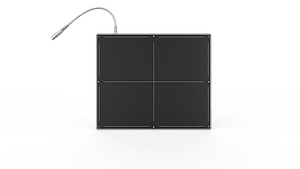Two of the glaring differences between traditional film x-ray and digital imaging methods are lower radiation dose and the ability to modify the captured images using software. Insofar as radiation is concerned, digital radiography is more efficient as it requires far less radiation to achieve the desired imaging results. The difference in patient radiation dose is truly significant—50% or greater depending on digital x-ray being utilized. The ability to manipulate and enhance digital x-ray images with software in a computer is certainly a plus for digital x-ray. For example, areas of interest on images can be enlarged and also altered (e.g. changing contrast). Digital x-ray often utilizes flat panel detectors, which often consist of a scintillator layer and an amorphous silicon thin film transistor (TFT) array, which have several advantages over both traditional film radiography and computed radiography.
There are two types of flat panel detectors used in digital radiography: direct and indirect. One type of detector is based on a direct conversion process of x-rays while other one uses an indirect conversion method. The term direct refers to the acquisition and capture of x-ray images without user intervention. A conversion of x-rays into electron-hole pairs with direct signal capture occurs. On the other hand, indirect detectors convert x-rays into light and then light into photoelectrons. Below, we have broken down the details of the two types of flat panel detectors.
Direct
• The outermost layer of these detectors is comprised of a high voltage bias electrode
• The detector is made of amorphous selenium
• Converts x-rays directly into an electrical charge
Indirect
• The detector is composed of amorphous silicon
• The outermost layer is a scintillator material such as Cesium Iodide (CsI)
• These detectors convert x-rays into light and then to an electrical charge
Whether direct or indirect, flat panel detector technology outshines less contemporary methods, such as conventional film-based radiography. If you have any questions, please feel free to contact us.


